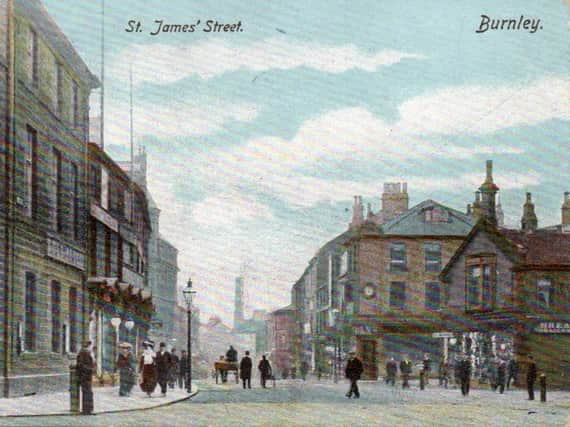From the Burnley Express Archive: Don't let the name put you off this interesting Burnley street


It comes from the Briercliffe Society Collection and shows part of St James’s Street in Burnley. The card was posted in April, 1904, and, unusually it has the date of postage, on the back, twice; once in the form of the postmark and, secondly, in that the writer has dated the card and written his address, 11 Coal Street, Burnley.
Coal Street is just off St James’s Street. It is to the left, near St James’ Hall, which can be seen in the image. Unfortunately, I only have a few references to Coal Street. The one for 1899 lists 11 Coal Street as offices for George Storey, Esq. JP, land agent, but there must have been another business in the premises, by 1904, as the writer of the card addresses it to a confectioner’s in Blackpool, at Foxhall Road, stating, “I hope to call on Thursday, when your orders will be esteemed, Yours I A Spencer”.
Advertisement
Hide AdAdvertisement
Hide AdCoal Street, according to the 1912 map, appears to have a quite a lot of buildings though the street is only short. It did have a number of residential properties and businesses in 1899. The first listed is William Aspinall, at number 7, a painter and decorator. Then we go back to number 5, which is doubly confusing, because it is given as “Lupton Bros, Dixon and Longbottom Ltd”, printers, two different firms.
At number 7 is Joseph Crossley and Sons, fruiterers. There is no number 9 after which number 11, is as indicated. Number 13 was the home of Mrs Elizabeth Woodhouse (or this might have been Woodhead), a fruit and fish dealer, with shops at 10 Bridge Street and 5 Hammerton Street. At number 15, Mr George Bell had his watchmaker’s business and, at 18, lived Joseph Webster, a caretaker.
It must have been odd to have lived in Coal Street. The name might have put people off, but it derived from the remains of the early coal industry. One of the mines must have been quite a sight because it was water-powered and drained by the bucket and chain method, which could be very noisy. The water came from the goit which had already turned the wheel of the fulling mill. Mind you that was some time before 1904.
Getting back to today’s image; on the left is the Bull Hotel, which dates from about 1817, replacing the former Black Bull, which was a converted farm house. St James’ Hall is the slightly blue, taller building, just beyond the shops, which appear to be brown in the image.
Advertisement
Hide AdAdvertisement
Hide AdIn the distance, in the background, there is a single mill chimney which would have been in the area of the river Calder, where there were several candidates, one of which was the Saw Mills on Veever’s Street.
On the other side of the road, you can see Shea’s, the tobacconist, at the corner of Market Street, with the Thorn Hotel directly behind.